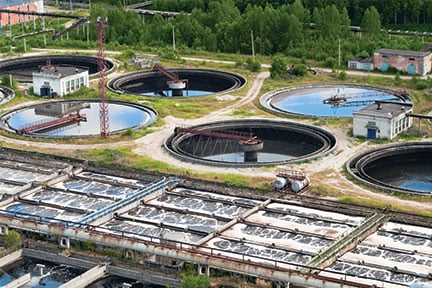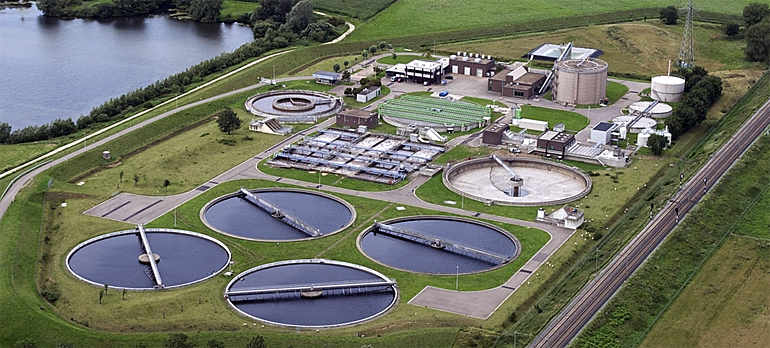Why Choosing the Right Wastewater Solution is Essential for Your Property
Why Choosing the Right Wastewater Solution is Essential for Your Property
Blog Article
Understanding Wastewater Therapy Processes and Their Ecological Influence
The ins and outs of wastewater treatment processes play a critical function in mitigating environmental challenges associated with water contamination. Each stage, from initial to advanced treatments, is made to resolve specific impurities, eventually guarding both public health and wellness and aquatic communities. Despite technological innovations in treatment performance, significant challenges continue, including the management of residual pollutants and the ramifications of nutrient runoff. As we discover the intricacies of these procedures, it comes to be important to question how much present methodologies can develop to meet the growing demands of sustainability and environmental conservation.
Summary of Wastewater Treatment
Exactly how is wastewater transformed right into a safe resource for the setting? Wastewater therapy is an important procedure designed to remove impurities from utilized water, thus securing public wellness and shielding ecological communities. This procedure starts with the collection of wastewater from domestic, commercial, and industrial resources, which is after that routed to treatment centers.
At these centers, numerous physical, chemical, and organic techniques are employed to deal with the wastewater. First testing gets rid of big particles, adhered to by sedimentation to separate much heavier solids. Ultimately, organic therapies, such as triggered sludge processes, make use of microorganisms to damage down natural issue. These methods not just reduce toxin levels yet additionally facilitate the healing of beneficial nutrients.
The treated effluent can be securely discharged into natural water bodies or recycled for irrigation and commercial functions, advertising source conservation. Furthermore, the therapy procedure produces biosolids, which can be repurposed as fertilizers or dirt changes, further enhancing sustainability.
Phases of Treatment Procedures
The wastewater treatment process typically includes three main stages: initial, primary, and additional treatment. Each phase offers a distinct function in minimizing the toxin load and ensuring the effluent fulfills ecological requirements prior to discharge.

The main treatment stage concentrates on the physical separation of suspended solids from the wastewater. Via sedimentation, much heavier particles clear up at the end of sedimentation containers, creating sludge, while lighter products, such as oils and oils, float to the surface and are skimmed off. This process considerably decreases the organic and not natural tons in the wastewater.
Secondary treatment is an organic procedure targeted at more decreasing the focus of natural matter. Numerous techniques, including turned on sludge systems and flowing filters, use microorganisms to metabolize organic pollutants. This phase is crucial for attaining the needed biochemical oxygen need (FIGURE) reduction, inevitably leading to cleaner effluent ready for discharge or more treatment. Each stage is important in guarding environmental and public health.

Advanced Treatment Technologies
Complying with the additional treatment processes, advanced treatment innovations play a crucial role in more improving the quality of dealt with wastewater. These technologies are created to get rid of residual impurities that are not properly eliminated throughout key and secondary treatments, ensuring the effluent satisfies rigid governing standards.
Among the widely utilized advanced treatment methods are membrane filtering, reverse osmosis, and progressed oxidation processes. Membrane layer filtration, including microfiltration and ultrafiltration, is efficient in separating great particles, virus, and colloids from the water (Wastewater). Reverse osmosis uses semi-permeable membranes to eliminate dissolved solids, causing premium water appropriate for numerous applications
Advanced oxidation procedures (AOPs) use strong oxidants my blog to break down natural contaminants, including drugs and personal care products that are resistant to conventional treatment. These techniques boost the biodegradability of complex compounds, promoting their elimination.
Another substantial technology is using organic nutrient elimination procedures, which specifically target nitrogen and phosphorus, protecting against eutrophication in receiving water bodies. Overall, sophisticated treatment innovations are vital for accomplishing greater levels of purification, advertising water reuse, and protecting public health and wellness while resolving the difficulties related click reference to wastewater management.
Environmental Benefits of Treatment
Countless ecological benefits occur from reliable wastewater treatment processes that add to ecosystem health and wellness and sustainability. Largely, these processes significantly minimize the launch of hazardous contaminants right into natural water bodies, which aids preserve aquatic ecological communities. By removing contaminants such as hefty metals, nutrients, and pathogens, treated wastewater alleviates the risk of waterborne illness and advertises biodiversity in marine atmospheres.
Additionally, wastewater therapy facilities frequently employ sophisticated modern technologies that make it possible for water recycling and reuse. This practice not just saves freshwater resources however also lowers the demand on all-natural water supplies. Boosted nutrient elimination from wastewater can likewise stop eutrophication, a procedure that causes algal flowers and subsequent oxygen deficiency in aquatic systems.
Additionally, efficient treatment procedures can decrease greenhouse gas exhausts, specifically methane and laughing gas, which are frequently released during without treatment wastewater decay. By catching and utilizing biogas from anaerobic digesters, facilities can transform waste into renewable energy, thus adding to a decrease in nonrenewable fuel source reliance.
Challenges and Future Patterns
While the ecological benefits of wastewater treatment are clear, numerous difficulties continue that hinder optimal outcomes in this area. One significant problem is aging infrastructure, which frequently results in inadequacies and enhanced functional costs - Wastewater. Several treatment plants were designed years back, and their capacities do not straighten with modern demands, that include more stringent regulatory standards and higher volumes of wastewater as a result of urbanization

Looking in advance, there is a growing emphasis on source healing and round economy principles within wastewater treatment. Advancements such as anaerobic digestion, which can go to my site produce biogas, and advanced filtering technologies are obtaining grip. These methods not just improve treatment performance yet additionally advertise sustainability.
Eventually, addressing these challenges requires cooperation among stakeholders, financial investment in technology, and a dedication to recurring study. By accepting these fads, the wastewater therapy market can advance to meet the needs of an altering atmosphere and culture.
Verdict
To conclude, wastewater treatment processes play an important role in improving environmental top quality and public health. The multi-stage therapy structure, coupled with sophisticated innovations, effectively mitigates air pollution and promotes sustainable water administration. By attending to recurring pollutants and decreasing vitamins and mineral runoff, these processes contribute to the preservation of marine ecosystems and the decrease of greenhouse gas emissions. Continued improvements and adjustments in therapy techniques will be essential for overcoming arising challenges and making sure the sustainability of natural resources (Wastewater).
Report this page